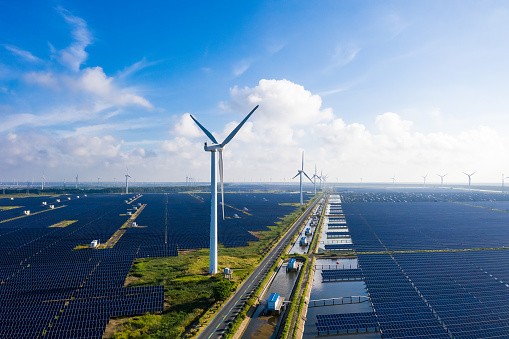Ellen Moons, a Professor of Physics, notes that solar cells and LEDs are made from semiconductor materials used in developing computers, electronics, screens, and cell phones. Halide perovskite is a newer type of semiconductor that has gained significant attention for its potential use as a high-performing, easy-to-manufactured solar cell material.
However, one disadvantage of perovskite solar cells is that they tend to degrade over time. It would be highly beneficial, both environmentally and otherwise, if these solar cells could somehow repair themselves, something that has been observed in a few materials and may seem like science fiction.
The study discussed in the previous paragraph was conducted as a collaboration between Karlstad University, Ben-Gurion University of the Negev, and the Weizmann Institute of Science in Israel. Metal halide perovskite is a new category of semiconductor that has been shown to have the potential for self-repair.
Self-Healing Semiconductors
AZO Materials said these semiconductors could be used in highly efficient LEDs and solar cells. One of the Israeli research groups has demonstrated that metal halide perovskite solar cells, which typically degrade in sunlight, can restore their effectiveness at night when it is dark.
The other Israeli research group conducted an experiment in which they exposed single crystals of lead-based metal halide perovskites to strong lasers, causing the material to lose its ability to glow or photoluminesce. The scientists then observed that the material regained its photoluminescence after resting in the dark. While it is unclear how these two observations - one involving a thin, multi-crystalline layer in the solar cells and the other involving single crystals - are related or how the self-repair process works, it is clear that metal halide perovskites have the potential for self-repair.
As per Moons, it is important to study various samples with and without interfacial layers to understand how these materials can repair themselves. These interfacial layers' roles will be examined to prevent ions and degradation products from leaving the perovskite layer. It is also possible that these degradation products could be recycled to reverse the process and repair the metal halide perovskites.

A recent study reveals that Perovskite solar cells possess healing capabilities during the night.
ALSO READ: Organic Solar Cells Treated with Water to Fine-Tune Efficiency of Devices
Changes During Repair Process
The collaborating groups will use non-destructive analytical techniques to identify which bonds in the material change during the degradation and repair processes and what effects these shifts have on the material's electronic properties. By studying these changes, the researchers hope better to understand the self-repair mechanism of metal halide perovskites.
According to Moons, this project has the potential to lead to the development of new, sustainable semiconductor materials that are energy-efficient to manufacture and able to restore their properties after degradation. Understanding the self-repair mechanisms of semiconductor electronics is expected to be of great value in developing future renewable energy sources and sustainable electronics.
This project has received financial support from the Swedish Foundation for Strategic Research (SSF). As part of the "Lise Meitner Grants for Israeli-Swedish Research Collaboration," a bilateral collaboration between SSF and the Israeli Ministry of Science, Technology, and Space (MOST), approximately eight research projects will share a grant of 50 million SEK.
RELATED ARTICLE: Perovskites Solar Cells Could Replace or Enhance Silicon
Check out more news and information on Solar Energy in Science Times.














